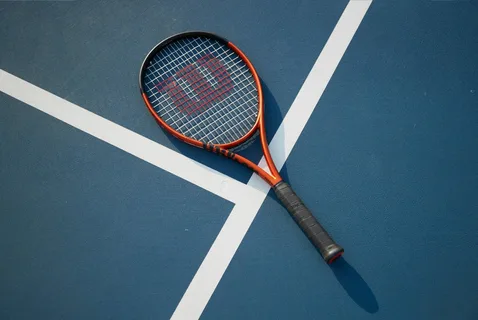who introduced the table tennis game in Vienna and Budapest

Ah, table tennis! A game that might seem simple at first glance, but once you dive in, it’s a whirlwind of speed, strategy, and skill. The clack of the ball, the quick reflexes, and the sheer excitement of competition make it a sport loved by many around the globe. But have you ever stopped to wonder about the origins of this fast-paced game, especially in the charming cities of Vienna and Budapest? Who introduced the table tennis game in Vienna and Budapest, and how did it grow roots in these vibrant locales? In this article, we’ll unravel the history, the key figures involved, and the cultural significance of table tennis in these two cities. So, grab your paddles, and let’s dive into this intriguing tale!
The Beginnings of Table Tennis
Before we get into the nitty-gritty of who introduced the table tennis game in Vienna and Budapest, let’s take a moment to understand where it all began. The game we know today evolved from various indoor games played in the late 19th century. Originally, it started as a parlor game in England, where upper-class Victorians would use makeshift equipment to have a good time after dinner.
The Evolution of the Game
19th Century Origins: In the 1880s, British enthusiasts began playing with a ball made of cork or rubber, a table resembling a dining table, and books as makeshift nets. They called it “gossima” or “whiff-whaff.”
Standardization: By the 1900s, the game saw significant development, with standardized rules and equipment, including the use of celluloid balls and wooden paddles.
International Spread: The sport quickly gained popularity beyond England, making its way to various countries, including Austria and Hungary, where it would soon become a staple in local culture.
Now, let’s focus on the pivotal figures and events that brought table tennis to Vienna and Budapest.
Who Introduced the Table Tennis Game in Vienna and Budapest?
The Early Adopters
The introduction of table tennis in Vienna and Budapest can largely be attributed to a combination of enthusiasts, local clubs, and the overall sporting culture of the time. While it’s hard to pin down a single individual who said, “Let’s play table tennis,” we can highlight a few key players in this fascinating story.
In Vienna
The Vienna Sports Club Movement: In the early 1900s, various sports clubs in Vienna started to embrace table tennis. These clubs played a crucial role in popularizing the game, making it accessible to the masses.
Pioneering Players: Notable players like Hans Schreiber and Walter Schöler began organizing tournaments and exhibitions, drawing attention to the game and helping establish it as a recognized sport.
In Budapest
Cultural Influences: In Budapest, the introduction of table tennis was influenced by the broader European sports movement. The city’s vibrant café culture provided a perfect backdrop for casual games.
The Budapest Table Tennis Association: Founded in 1921, this association marked a significant milestone in promoting the sport. It organized competitions, fostering a competitive spirit among local players.
The Role of International Events
International competitions and tournaments also played a vital role in introducing the game to Vienna and Budapest. These events brought together players from various countries, creating a melting pot of styles and techniques that further enriched the game.
The Influence of World Championships
The first World Table Tennis Championships were held in 1926 in London, which spurred interest in Europe. Both Vienna and Budapest sent representatives to compete, igniting local passion for the sport.
The buzz around international players, their techniques, and the thrill of competition encouraged locals to pick up a paddle and join in on the fun.
The Cultural Impact of Table Tennis in Vienna and Budapest
Once the game took hold, it transformed into more than just a pastime. It became a cultural phenomenon, deeply intertwined with the social fabric of both cities.
Vienna: A Hub of Innovation
In Vienna, table tennis clubs became social hubs where people gathered, played, and formed friendships. The sport encouraged camaraderie and healthy competition among players of all ages. It wasn’t just about the game; it was about community.
Cafés and Clubs: Many cafés started setting up table tennis tables, allowing patrons to enjoy a game while sipping coffee. It created a lively atmosphere that attracted people from all walks of life.
Art and Culture: Artists and musicians often participated in local tournaments, blending the worlds of sport and art, making table tennis a staple in Vienna’s rich cultural scene.
Budapest: A Sporting Legacy
In Budapest, table tennis became synonymous with national pride. The city produced many talented players who excelled in international competitions, putting Hungary on the map in the world of sports.
Training Grounds: Budapest saw the establishment of specialized training centers and academies, nurturing young talent and ensuring a steady flow of skilled players.
The Rise of Champions: Players like István Jónyer and László Pál gathered national attention, inspiring future generations to take up the sport.
FAQs About Table Tennis in Vienna and Budapest
1. When did table tennis first become popular in Vienna and Budapest?
Table tennis gained popularity in the early 1900s, particularly after the establishment of local clubs and associations.
2. Who were the key figures involved in promoting table tennis in these cities?
In Vienna, figures like Hans Schreiber and Walter Schöler played pivotal roles. In Budapest, the Budapest Table Tennis Association was crucial in the sport’s promotion.
3. What cultural influences contributed to the growth of table tennis?
The café culture in Budapest and the social clubs in Vienna provided spaces for people to gather and play, significantly impacting the sport’s popularity.
4. How did international competitions influence local interest in table tennis?
The World Table Tennis Championships and other international events showcased top talent and techniques, inspiring locals to engage in the sport.
5. What is the current status of table tennis in Vienna and Budapest?
Today, both cities continue to have active table tennis communities, with numerous clubs, tournaments, and a strong emphasis on youth development.
Conclusion
So, who introduced the table tennis game in Vienna and Budapest? While there isn’t a straightforward answer, it’s clear that a blend of enthusiastic players, supportive clubs, and cultural influences played a significant role in establishing the game in these cities. The history of table tennis in Vienna and Budapest is a testament to the sport’s ability to bring people together, foster community, and inspire a sense of competition. Whether you’re a seasoned player or a casual fan, the rich heritage of table tennis in these locales adds a layer of depth to the game we all love.
As we look back, it’s important to appreciate the pioneers who helped shape table tennis into the exciting and dynamic sport it is today. And who knows? The next time you step up to the table, you might just be channeling the spirit of those early enthusiasts who said, “Let’s play!”
